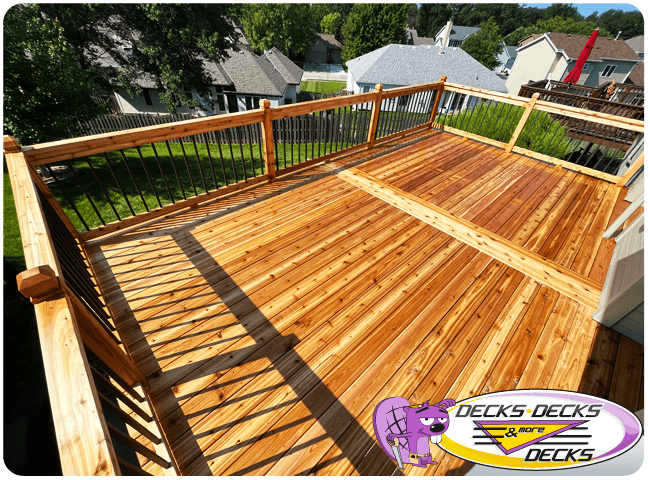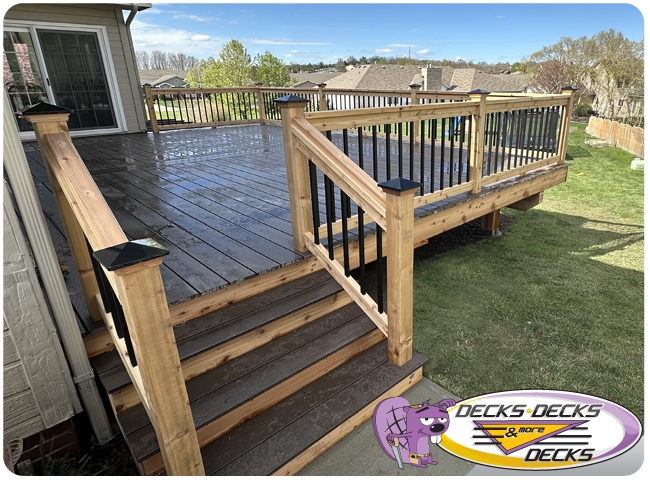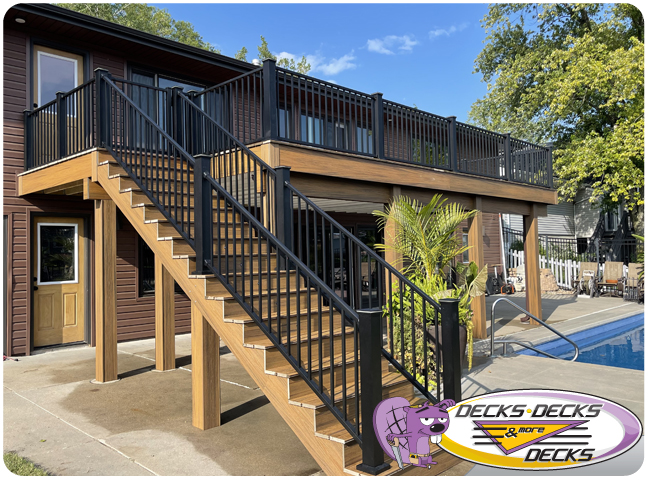Exploring Wood Decks: Benefits, Costs, and Maintenance
Introduction: The Timeless Appeal of Wood Decks
Wood decks have long been a favorite among homeowners for their natural beauty and versatility. From traditional wood decking to wood patio covers and wood railings, a wood deck adds warmth and character to any outdoor space. In this guide, we’ll explore the benefits, costs, and maintenance required for wood decks, along with tips on finding the best wood decking contractors in Omaha.
Benefits of Wood Decking
Wood decking offers unmatched natural beauty, giving your outdoor space a classic, organic look. Whether you opt for cedar, redwood, or pressure-treated wood, the grain patterns and warm colors of natural wood enhance the aesthetic of any home. Beyond its beauty, wood is durable and versatile, allowing for customization with stains and finishes.
- Customizable: Wood decks can be stained or painted to match your home’s style.
- Affordable: In many cases, wood decking offers a lower upfront cost compared to other materials.
- Sustainable Options: Homeowners seeking eco-friendly choices can opt for sustainably harvested woods.
Wood Deck Cost
The wood deck cost can vary depending on the type of wood used, the size of the deck, and the complexity of the design. Pressure-treated wood is often more affordable, while cedar and redwood come at a premium due to their natural rot resistance.
- Pressure-Treated Wood: $15 – $25 per square foot.
- Cedar or Redwood: $25 – $35 per square foot.
- Installation: Hiring professional wood decking contractors can add to the overall cost, but ensures quality construction that will last for years.

Wood Deck Maintenance
One of the key considerations for homeowners is wood deck maintenance. While wood decking is beautiful, it does require regular upkeep to maintain its appearance and structural integrity. This includes staining or sealing every 2-3 years and regular cleaning to prevent mold and mildew growth.
Maintenance Tips:
- Annual Cleaning: Sweep and wash your deck to remove debris and grime.
- Staining or Sealing: Every 2-3 years, apply a stain or sealant to protect the wood from moisture and UV damage.
- Inspect for Rot: Periodically check for signs of rot, especially in areas where water may collect.
Finding the Right Wood Decking Contractors in Omaha
If you’re in Omaha, finding reliable wood decking contractors is essential to ensure your deck is built to last. Look for contractors with experience in wood decking Omaha and a portfolio that demonstrates high-quality craftsmanship.
Conclusion
Wood decks are a timeless choice for homeowners who value natural beauty and versatility. Though wood deck maintenance requires effort, the payoff is a stunning, long-lasting outdoor space. By understanding the wood deck cost and hiring experienced wood decking contractors, you can create the deck of your dreams.



